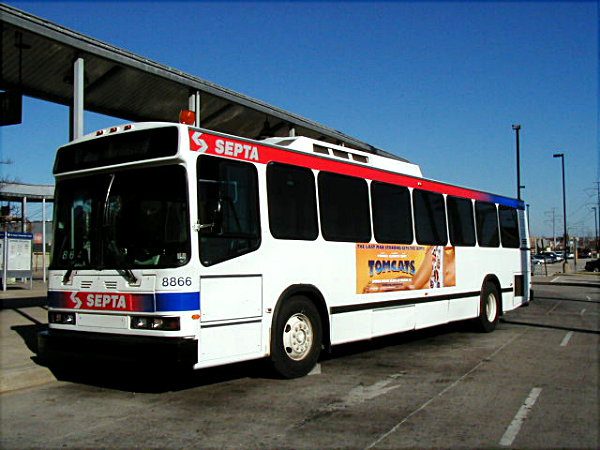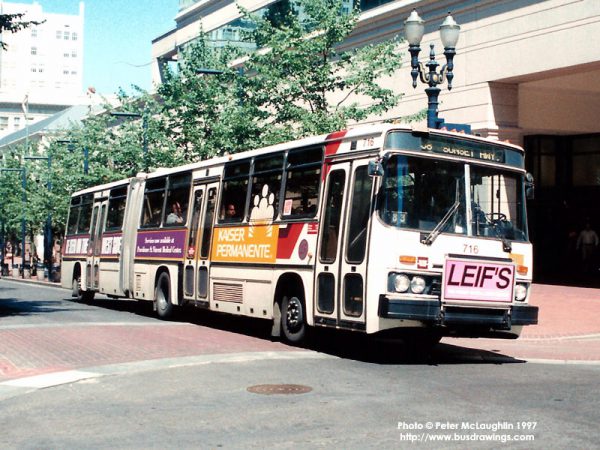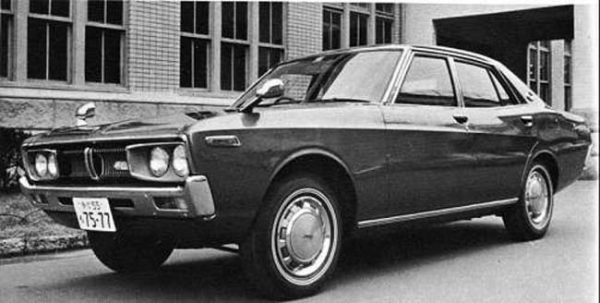“The Flxible Flxettes……..they’re coming for you……..watch out…….they’re ready to cause mayhem with their lithe, lissome lethality…….”
No, no, no, this is not a review of a Russ Meyer movie…….
The Flxible Flxette was a light duty bus built from 1964 to 1976 by the Flxible Corporation, makers of the larger Clipper, Twin Coach, New Look, and StarLiner series of coaches. The Flxette was designed for small city and rural regional transit cooperatives, livery services, and other transport operators that didn’t need or couldn’t afford a typical size motor coach.
Flxible New Look 30 ft coach
As readers of CC know, dimensions for transit coaches in the US have been fairly constant over the past 60 years, mostly due to federal and state regulation. Widths are 96 and 102 inches, with lengths in the 30, 35 and 40 foot range. The smallest of these coaches, the 30 foot model, will typically seat 29 passengers.
In the early sixties, Flxible received inquiries on a coach smaller than their 30 foot New Look model; one with a shorter wheelbase able to navigate narrower, curvy roads, handle a smaller load of approximately 20 passengers, and perhaps most importantly, be significantly cheaper in price.
Evaluating all these factors, Flxible determined the best design would utilize an existing truck frame with a forward control (FC)/cab-over-engine body, maximizing interior space while limiting overall length.
Coach under construction at SCM Evergreen factory prior to Flxible purchase
Fortunately, Flxible had acquired the Southern Coach Manufacturing (SCM) Co. of Evergreen Alabama, a maker of buses and motor homes, in the early ‘60s– and its production facilities provided a perfect fit to build this new coach. The first Flxette came down the Evergreen factory line in 1964. These coaches were approximately 96 inches wide, 20 feet in length and seated 19-23 passengers. Gross max vehicle weight was around 15,000 lbs.
Screen capture from 1970 movie “Airport”
Flxettes were a familiar sight across the US in the ’60s and ’70s – not only in small towns and rural areas, but in larger cities serving as a shuttle or in other types of livery service. Before the ubiquitous “cutaway” mini-buses seen at every airport today, Flxettes routinely ferried passengers between terminals, to their hotels and to their rental cars.
Flxible was known for meeting customer’s specialized build-to-order requirements, and the Flxette continued that trend……
Ford 300 cu in Six
Chassis were sourced from existing manufacturers, mostly Ford, but Chevy and Dodge were used in later versions. The Ford 300 cubic inch six cylinder was the typical engine.
Federal safety regulations and the cutaway (which was cheaper) eventually spelled the end of the Flxette.
Toyota Coaster 21 passenger minibus
Due to its cost advantages, the cutaway still reigns supreme in the US light duty bus market, however, overseas, where size and maneuverability are more important, small FC coaches are still popular.
Flxette’s certainly couldn’t be considered good looking or of high quality, but they had a likable, workman-like, utilitarian charm……..the more I think about it, maybe they do have something in common with a Russ Meyer movie………..







































































































































































































































